


Assocreation
Solar Pink Pong
file festival
Solar Pink Pong” is a hybrid of street and video game. Players of this game can interact with an animated pink sunlight reflection on the street using their bodies and shadows. The device that makes this game possible can be mounted on utility poles or building sides.

QUBIT AI – International Electronic Language Festival – Art and Technology
QUBIT AI | quantum & synthetic ai
Electronic Language International Festival
July 3rd to August 25th
Tuesday to Sunday, 10am – 8pm
FIESP Cultural Center
Design: André Lenz
Image: Iskarioto Dystopian AI Films – Athena
QUBIT AI
In its 25 years of existence, the International Electronic Language Festival (FILE) is an internationally renowned Brazilian project that since 2000 has explored the intersection between art and technology. With more than two decades of history, the festival stands out for fostering exhibition spaces and debate about artistic innovations driven by disruptive and innovative technologies, inviting the public to get involved with experimental forms of art that challenge the boundaries of conventionality. Currently, two of these technologies stand out in the contemporary scenario: the accelerated development of quantum computing and artificial intelligence corroborated by synthetic data.
Quantum computing, an emerging revolution in the technological field, offers a new range of creative possibilities for contemporary artists. This new era allows the exploration of unprecedented frontiers through a new computational format that consists mainly of quantum superposition and entanglement, a new field of exploration for synthetic computer science, as well as for the arts in general; on the other hand, artificial intelligence, fueled by synthetic data, offers artists a new way of making and understanding art, opening up space for new forms, concepts and artistic expressions.
Entitled QUBIT AI, the exhibition delves into this unexplored territory presenting a selection of works of art resulting from the connection between artistic creation and technology, proposing a theoretical reflection on what the interrelationship between quantum computers and synthetic artificial intelligence will be.
Visitors will be invited to experience immersive installations, experimental videos, digital sculptures and other forms of interactive art, which intertwine reality and imagination. The exhibition encourages reflections on the influence of technology on art and contemporary society, while at the same time providing an environment to compare already established technological arts (analog and digital) with the possible futures of art in the synthetic era, enhanced by quantum computing. The QUBIT AI exhibition at FILE SP 2024 transcends the mere presentation of works of art; it is a journey to the limits of human creativity, driven by the convergence of art, science and technology.
Ricardo Barreto and Paula Perissinotto
co-organizers and curators of FILE
International Electronic Language Festival

QUBIT AI: AESTHETIC SYNTHETIC FILE – São Paulo 2024 – Art and Technology
FILE 2024
QUBIT AI | quantum & synthetic ai
Electronic Language International Festival
July 3rd to August 25th
Tuesday to Sunday, 10am – 8pm
FIESP Cultural Center
Design: André Lenz
Image: Iskarioto Dystopian AI Films – Athena
QUBIT AI
In its 25 years of existence, the International Electronic Language Festival (FILE) is an internationally renowned Brazilian project that since 2000 has explored the intersection between art and technology. With more than two decades of history, the festival stands out for fostering exhibition spaces and debate about artistic innovations driven by disruptive and innovative technologies, inviting the public to get involved with experimental forms of art that challenge the boundaries of conventionality. Currently, two of these technologies stand out in the contemporary scenario: the accelerated development of quantum computing and artificial intelligence corroborated by synthetic data.
Quantum computing, an emerging revolution in the technological field, offers a new range of creative possibilities for contemporary artists. This new era allows the exploration of unprecedented frontiers through a new computational format that consists mainly of quantum superposition and entanglement, a new field of exploration for synthetic computer science, as well as for the arts in general; on the other hand, artificial intelligence, fueled by synthetic data, offers artists a new way of making and understanding art, opening up space for new forms, concepts and artistic expressions.
Entitled QUBIT AI, the exhibition delves into this unexplored territory presenting a selection of works of art resulting from the connection between artistic creation and technology, proposing a theoretical reflection on what the interrelationship between quantum computers and synthetic artificial intelligence will be.
Visitors will be invited to experience immersive installations, experimental videos, digital sculptures and other forms of interactive art, which intertwine reality and imagination. The exhibition encourages reflections on the influence of technology on art and contemporary society, while at the same time providing an environment to compare already established technological arts (analog and digital) with the possible futures of art in the synthetic era, enhanced by quantum computing. The QUBIT AI exhibition at FILE SP 2024 transcends the mere presentation of works of art; it is a journey to the limits of human creativity, driven by the convergence of art, science and technology.
Ricardo Barreto and Paula Perissinotto
co-organizers and curators of FILE
International Electronic Language Festival

QUBIT AI: FILE QUANTUM WORKSHOP 2024 – São Paulo – Art and Technology
FILE 2024
QUBIT AI | quantum & synthetic ai
Electronic Language International Festival
July 3rd to August 25th
Tuesday to Sunday, 10am – 8pm
FIESP Cultural Center
Design: André Lenz
Image: Iskarioto Dystopian AI Films – Athena
QUBIT AI
In its 25 years of existence, the International Electronic Language Festival (FILE) is an internationally renowned Brazilian project that since 2000 has explored the intersection between art and technology. With more than two decades of history, the festival stands out for fostering exhibition spaces and debate about artistic innovations driven by disruptive and innovative technologies, inviting the public to get involved with experimental forms of art that challenge the boundaries of conventionality. Currently, two of these technologies stand out in the contemporary scenario: the accelerated development of quantum computing and artificial intelligence corroborated by synthetic data.
Quantum computing, an emerging revolution in the technological field, offers a new range of creative possibilities for contemporary artists. This new era allows the exploration of unprecedented frontiers through a new computational format that consists mainly of quantum superposition and entanglement, a new field of exploration for synthetic computer science, as well as for the arts in general; on the other hand, artificial intelligence, fueled by synthetic data, offers artists a new way of making and understanding art, opening up space for new forms, concepts and artistic expressions.
Entitled QUBIT AI, the exhibition delves into this unexplored territory presenting a selection of works of art resulting from the connection between artistic creation and technology, proposing a theoretical reflection on what the interrelationship between quantum computers and synthetic artificial intelligence will be.
Visitors will be invited to experience immersive installations, experimental videos, digital sculptures and other forms of interactive art, which intertwine reality and imagination. The exhibition encourages reflections on the influence of technology on art and contemporary society, while at the same time providing an environment to compare already established technological arts (analog and digital) with the possible futures of art in the synthetic era, enhanced by quantum computing. The QUBIT AI exhibition at FILE SP 2024 transcends the mere presentation of works of art; it is a journey to the limits of human creativity, driven by the convergence of art, science and technology.
Ricardo Barreto and Paula Perissinotto
co-organizers and curators of FILE
International Electronic Language Festival

QUBIT AI: FILE OPENING LECTURE 2024 – São Paulo – Art and Technology
FILE 2024
QUBIT AI | quantum & synthetic ai
Electronic Language International Festival
July 3rd to August 25th
Tuesday to Sunday, 10am – 8pm
FIESP Cultural Center
Design: André Lenz
Image: Iskarioto Dystopian AI Films – Athena
QUBIT AI
In its 25 years of existence, the International Electronic Language Festival (FILE) is an internationally renowned Brazilian project that since 2000 has explored the intersection between art and technology. With more than two decades of history, the festival stands out for fostering exhibition spaces and debate about artistic innovations driven by disruptive and innovative technologies, inviting the public to get involved with experimental forms of art that challenge the boundaries of conventionality. Currently, two of these technologies stand out in the contemporary scenario: the accelerated development of quantum computing and artificial intelligence corroborated by synthetic data.
Quantum computing, an emerging revolution in the technological field, offers a new range of creative possibilities for contemporary artists. This new era allows the exploration of unprecedented frontiers through a new computational format that consists mainly of quantum superposition and entanglement, a new field of exploration for synthetic computer science, as well as for the arts in general; on the other hand, artificial intelligence, fueled by synthetic data, offers artists a new way of making and understanding art, opening up space for new forms, concepts and artistic expressions.
Entitled QUBIT AI, the exhibition delves into this unexplored territory presenting a selection of works of art resulting from the connection between artistic creation and technology, proposing a theoretical reflection on what the interrelationship between quantum computers and synthetic artificial intelligence will be.
Visitors will be invited to experience immersive installations, experimental videos, digital sculptures and other forms of interactive art, which intertwine reality and imagination. The exhibition encourages reflections on the influence of technology on art and contemporary society, while at the same time providing an environment to compare already established technological arts (analog and digital) with the possible futures of art in the synthetic era, enhanced by quantum computing. The QUBIT AI exhibition at FILE SP 2024 transcends the mere presentation of works of art; it is a journey to the limits of human creativity, driven by the convergence of art, science and technology.
Ricardo Barreto and Paula Perissinotto
co-organizers and curators of FILE
International Electronic Language Festival

Ying Gao
2526
Polymorphic Robotic Garments
2526 refers to the number of hours invested in the creation of the two polymorphic robotic garments, from ideation to the finish, from the first line of drawing to the last stitch. The two polymorphic outfits of the 2 5 2 6 project are very real: woven, hand-screened, and consolidated materials have been specially designed to create these clothes. They are not virtual at all. However, they simulate the effects of virtual clothing: a surreal undulation generates a play of volume and transparency; their polymorphic movement, as well as their reflectivity, are results of an entirely new flexible material that combines glass, precious metals and silicone.

Iris van Herpen & Dutch National Ballet
Biomimicry
For the ‘Biomimicry’ film, Iris van Herpen and Dutch National Ballet explore the symbiotic relationship between the metamorphic force in which fashion and dance interlace. The film, directed by Ryan McDaniels, sees the mesmeric dancer JingJing Mao undulating into liquescent shapes and transcending into graceful figures that reflect her myriad of movements. The concept of the creation stems from the notion of biomimicry — the design and production of materials and systems that are modelled on biological processes. In line with Iris van Herpen’s continuous pursuit to materialise the invisible forces that structure the world, the film focusses on the bond between humanity and nature.
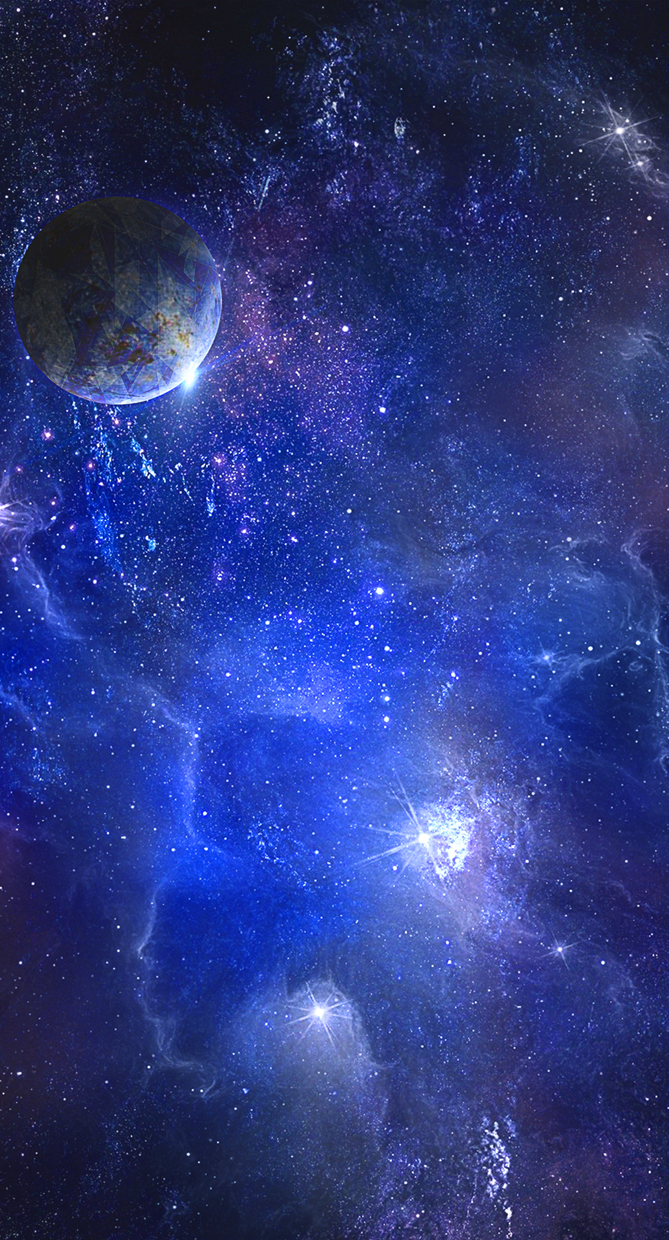
PARMEGIANI
ベルナール・パルメジャーニ
La Creation du Monde
This is a sprawling, ambitious painting in sound modeled on the birth of the universe. Moving from roiling, gaseous clouds of hiss and static through sharp peels of detailed, unrestrained texture, this is acousmatic music at its very finest, literally creating a universe of sound out of thin air.

Andrea Ling
The Wild Swans
The project is the creation of a series of kinetic garments that tell the story of “The Wild Swans” by Hans Christian Anderson. In the fairy tale, 11 princes have been turned into swans from a transformative spell cast by their wicked stepmother. Their sister, the princess, rescues the princes by collecting stinging nettles and knitting them, under a vow of silence and in great pain, into magical shirts so that her brothers can return to their human shape. She is very nearly done knitting them all when she runs out of time; she throws the sweaters onto her brothers to transform them, but the last one is incomplete, leaving her youngest brother forever with a swan’s wing instead of an arm.

MARILÈNE OLIVER
ドリームキャッチャー
この作品は、モントリオールで開催された2012年版のFestivalTransamériques(最近ではエドモントンのEnterprise Square Galleries)で、Creation / Exhibit The Body in Question(s)の一部として最初に展示されました。問題のボディには、メラニックスのCTスキャンに基づいたドリームキャッチャーと呼ばれる彫刻も含まれていました。イザベルは、Melanix.Executeの二次投影の前で行われたこの彫刻でパフォーマンスを振り付けました。彫刻は投影と同じデータから作成されたため、これにより、「ハードコピー」としてエクスポートされたデジタル化されたボディの接線方向の考慮が可能になりました。

STUDIO INI
Urban imprint
“If there is to be a “new urbanism… it will no longer be concerned with the arrangement of more or less permanent … but for the creation of enabling fields….that refuse to be crystallized into definitive form; it will no longer be about meticulous definitions, the imposition of limits, but about expanding notions, denying boundaries, not about separating and identifying entities, but about discovering hybrids; it will no longer be obsessed with the city but with the manipulation of infrastructure for endless intensifications and diversifications, shortcuts and redistributions – the reinvention of psychological space.”, Dutch architect + Harvard Professor, Koolhaas 959, writer of Delirious New York. URBAN IMPRINT is how we design a piece of this new urbanism, an augmented materiality , as we define it. An environment that is a ‘blank canvas’ to be reshaped by the future self.

Olivier Ratsi – Antivj
Onion Skin
Principalement basé sur l’expérience de la réalité et les représentations de la perception de l’espace, Olivier Ratsi considère la réalité objective, le temps, l’espace et la matière comme des notions d’information intangibles.
Son travail consiste à concevoir des processus de discontinuité avec ces notions afin de pouvoir partager avec le spectateur un autre point de vue.
Par le biais de ce processus, Ratsi crée une cassure dans cette réalité objective, altérant notre perception du réel.
Toutefois cette cassure significative et perturbante est assez modérée afin de ne pas priver le spectateur de sa capacité subjective de reconstruction/reconstitution de la réalité, via son expérience et sa propre culture. Le processus de création basé sur la déconstruction des repères spatio-temporels et les dispositifs utilisant la technique de l’anamorphose, développée au cours de ses recherches, jouent principalement le rôle de déclencheurs d’émotions, qui n’ont pas seulement pour but de montrer ce que peuvent être les choses autrement, mais plutôt de questionner leurs références.

ANDY LOMAS
Morphogenetic Creations
Created by a mathematician, digital artist and Emmy award winning supervisor of computer generated effects – Andy Lomas, Morphogenetic Creations is a collection of works that explore the nature of complex forms that can be produced by digital simulation of growth systems. These pieces start with a simple initial form which is incrementally developed over time by adding iterative layers of complexity to the structure.The aim is to create structures emergently: exploring generic similarities between many different forms in nature rather than recreating any particular organism. In the process he is exploring universal archetypal forms that can come from growth processes rather than top-down externally engineered design.Programmed using C++ with CUDA, the series use a system of growth by deposition: small particles of matter are repeatedly deposited onto a growing structure to build incrementally over time. Rules are used to determine how new particles are created, and how they move before being deposited. Small changes to these rules can have dramatic effects on the final structure, in effect changing the environment in which the form is grown. To create these works, Andy uses the GPU as a compute device rather than as a display device. All the data is held in memory on the GPU and various kernel functions are called to do things like apply forces to the cells, make cells split, and to render the cells using ray-tracing. The simulations and rendering for each of the different animated structures within this piece take about 12 hours to run, Andy explains. By the end of the simulations there are over 50,000,000 cells in each structure.The Cellular Forms use a more biological model, representing a simplified system of cellular growth. Structures are created out of interconnected cells, with rules for the forces between cells, as well as rules for how cells accumulate internal nutrients. When the nutrient level in a cell exceeds a given threshold the cell splits into two, with both the parent and daughter cells reconnecting to their immediate neighbours. Many different complex organic structures are seen to arise from subtle variations on these rules, creating forms with strong reminiscences of plants, corals, internal organs and micro-organisms.

hyungjoong kim
Data.Nature.Anagenesis_2
I am working for audio-visual arts, performance, media installation, computational visual design and sound. Probably this is why I am considered to be a media artist whatever but in fact, I judge myself as a media addict. By using the materials, I love to make creations with a concept of ‘(beauty+despair)/2’ of our future, which has no boundaries between nature, technology and human being.

Art+com
Chronos XXI
Chronos the god of time, permanently destroys and recreates. He who symbolises evanescence and return, was the thematic point of departure for the creation of the kinetic media installation Chronos XXI. The piece is a ‘finger exercise on antiquity’ by our Creative Director Joachim Sauter and was created during his residency at Villa Massimo in Rome. A pendulum continuously swings in front of a monitor. This motion controls the slow synthesis and destruction of depictions of Chronos on the monitor. Chronos appears in various interpretations by painters of the late Renaissance, Baroque and Classicism – as a man who disrobes Veritas, as a performer of volatile music, or docking Cupid’s wings, or as children and crop eating, a scythe and an hour glass carrying, beardy and winged old man.
video

Olivier Ratsi
Frame Perspective
Measuring 30m x 30m x 2.4m and featuring LED lights and 8 audio channels, Frame Perspective transforms a cavernous space at the Maison de la Région. On specific dates throughout the Constellations festival Ratsi has prepared a light programme in the space, accompanied by a sound composition played by Thomas Vaquié (see the festival programme for more details). Frame Perspective continues Ratsi’s interrogation of reality through the creation of exploratory and peripheral spaces. The installation’s repeating forms create new dimensions in the Maison de la Région, interrupting the lines of the architecture. Meanwhile the composition of interacting lights and sounds disrupts the sonic and visual textures of the space and resonates with the visitor on uncharted frequencies. The effect is to immerse the visitor into a fluctuating environment which connects digital technologies with physical spaces and raises questions about how reality is constructed and experienced in digital, physical and other realms.
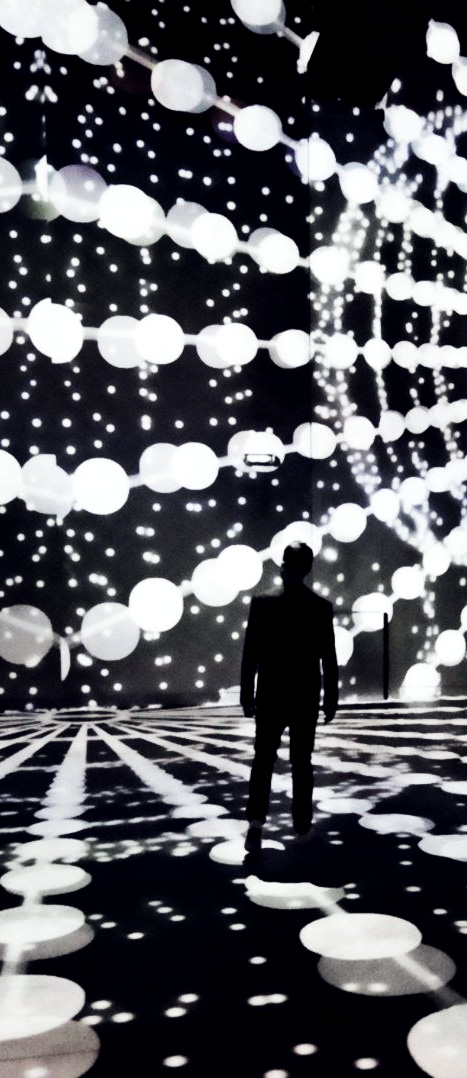
Ouchhh
Poetic AI
Ouchhh created an Artificial Intelligence and the t-SNE visualization of the hundreds of books and articles [approx. 20 million lines of text] written by scientists who changed the destiny of the world -and wrote history- were fed to the Recurrent Neural Network during the training. This, later on, was used to generate novel text in the exhibition. 136 projectors shining to be a veritable oneiric experience, the ‘POETIC – AI’ digital installation uses Artificial Intelligence in the visual creation process: the forms, light, and movement are generated by an algorithm that creates a unique and contemplative digital work, an AI dancing in the dark, trying to show us connections we could never see otherwise.

Studio Nucleo
Boolean, A Woodcraft Creation
Studio Nucleo acts as a kind of contemporary ministerial show. In their practice, they love to narrate epic stories throughout history. The design brand puts emphasis on important facts, symbols, signs, objects and materials that have altered human existence: metals, jade, etc, they draw references from within a 1000-year scope. Studio Nucleo creates modern design pieces that are unique and timeless!

Hans van Manen
Polish Pieces
Alvin Ailey
Introdans
music: Henryk Mikołaj Górecki
Photographer: Hans Gerritsen
In this exuberant ensemble work, Dutch choreographer van Manen displays his mastery for building dazzling creations from simple motifs and geometric patterns. Driven by the rhythms of Henryk Górecki’s score, the dancers come together and disperse in endlessly shifting formations that culminate in two sensual pas de deux.

Roman Ermakov
Alchemy 3
Our perception — the only true reality. Creation as a feeling that generates the image, expressed in the form. Beauty manifesto calling to go beyond that limit imagination. The aesthetics of art can not be reduced to a clear set of building blocks with which you can strengthen or weaken the perception of contrast. Beauty should not be subjected to analysis, that is communication and the call to participate in the transformation of the emotional to the visible.
Lionel Hun and Pixel n’Pepper
Black and White
Dedicated to the design and distribution of live shows combining the arts in all its forms, Compagnie Hybride offers a fusion of aesthetics. It is positioned at the crossroads of creativity where the bodies and new technology meet. Land on which confronts, body language and visual arts, in order to promote a work interdisciplinary research, choreography and artistic innovation. Through its creations, productions, performances, films, exhibitions, installations, educational workshops and event services, Compagnie Hybride, carried primarily by a desire to exchange, sharing, research and development, has a mandate to create and disseminate its designs in the artistic and cultural networks nationally and internationally.

Marguerite Humeau
High Tide
For her show High Tide, which was most recently exhibited at the Centre Pompidou, Humeau sculptured a collection of futuristic marine mammals and set about imagining what they might sound like if they could recount complex narratives. With mechanical clicks and whistles, similar to those made by whales and dolphins, Humeau’s creations tell of a great flood – an apocalyptic deluge that sparked the birth of their culture. “These floods”, she explains, “might be the consequence of climate change and rising oceans and the air becoming toxic. Maybe the great flood is actually us. As humans, we are the flood.”

Kapwani Kiwanga
Flowers for Africa
Flowers For Africa the artist mined archives related to African de-colonization to compile a list of flowers associated with individuals, nations and/or resistance movements; an image library that became the basis for meticulous sculptural recreations of individual flowers, or entire bouquets. As Kapwani described of the series, in a statement that reads as apt in relation to her overall approach: “What I’m trying to do is to acquaint myself with these various historic times, and questions, and more generally an interest I have in power dynamics. With this project I have chosen to look from the African continent at these global questions of power dynamics. This project is a way for me to acquaint myself with different archives, consulting documents and simply pondering on those moments. In this process, this was the most natural gesture which emerged”
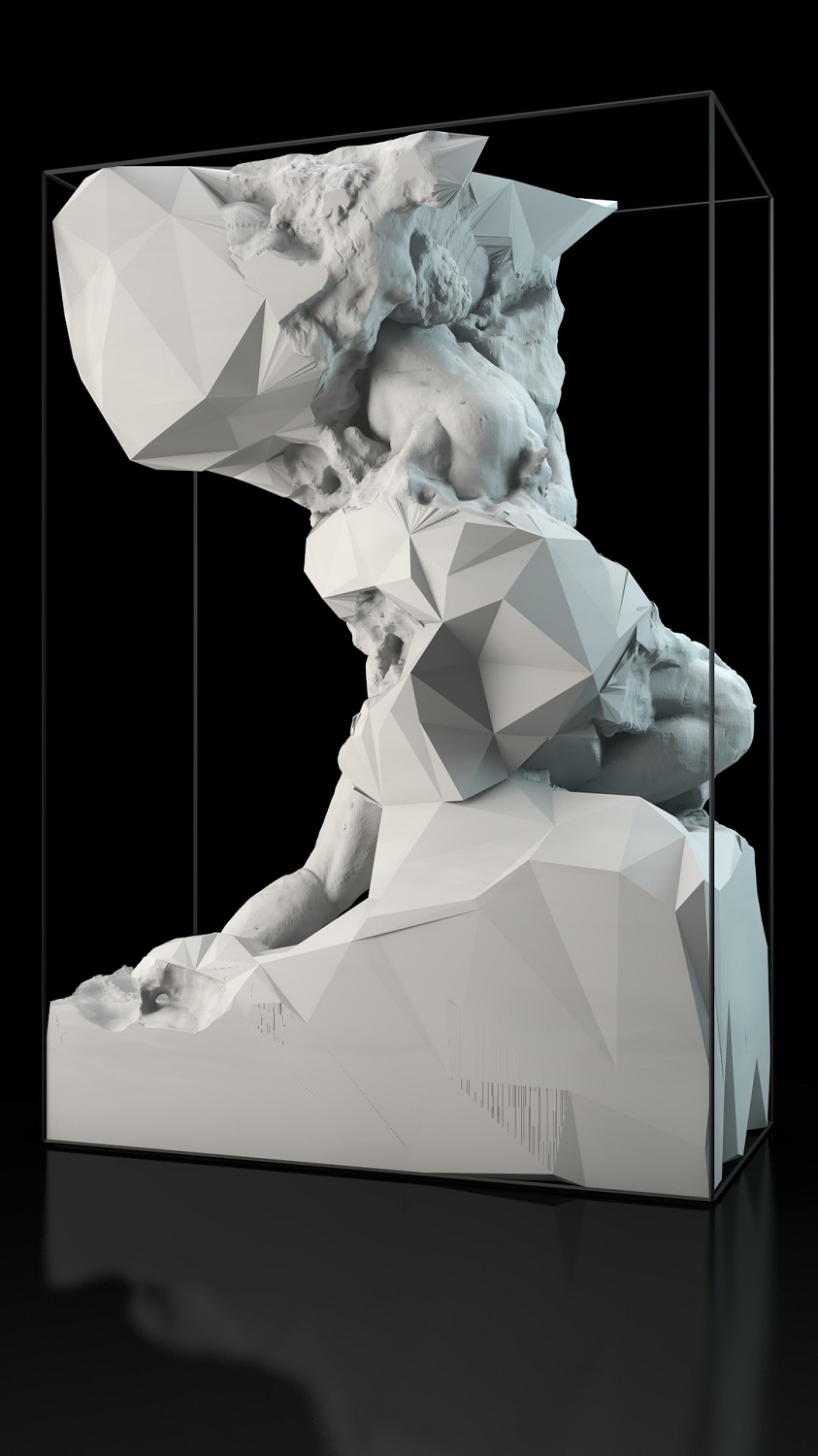
QUAYOLA
captives
“Captives is an ongoing series of digital and physical sculptures, a contemporary interpretation of Michelangelo’s unfinished series “Prigioni” (1513-1534) and his technique of “non-finito”.
The work explores the tension and equilibrium between form and matter, man-made objects of perfection and complex, chaotic forms of nature. Whilst referencing Renaissance sculptures, the focus of this series shifts from pure figurative representation to the articulation of matter itself. As in the original “Prigioni” the classic figures are left unfinished, documenting the very history of their creation and transformation.

Irina Shaposnikova
Crystallographica
The futuristic curves highlighted the collection’s minimalistic inspiration. The unusual creations brought to mind robotic-like fixtures, while exuding elegance and grace. We fell instantly in love with the cold yet fascinating faceted dresses.
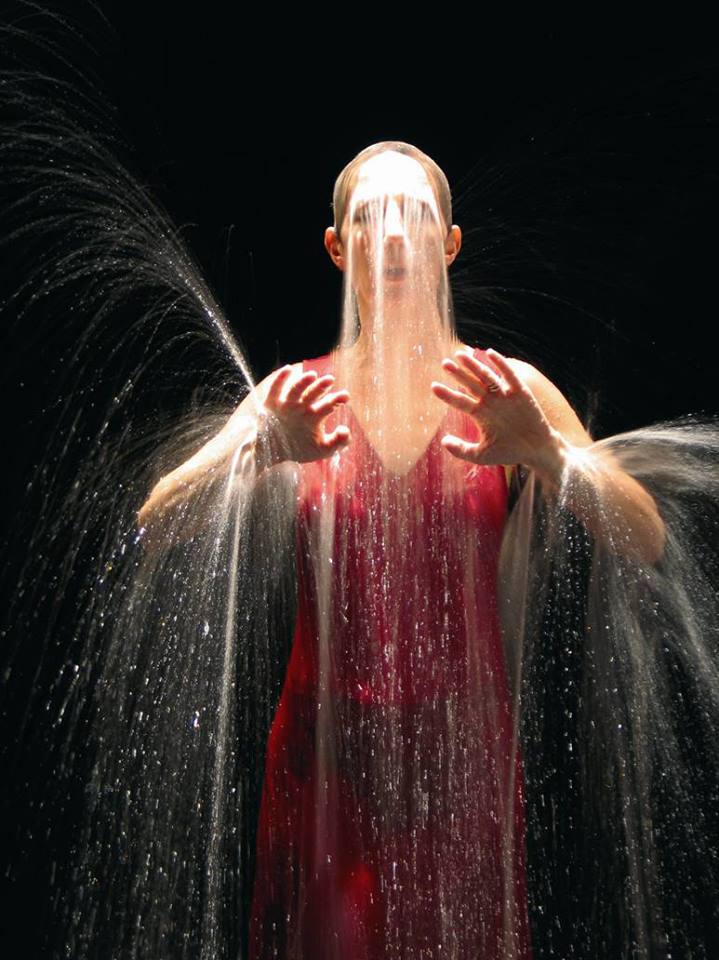
BILL VIOLA
比尔•维奥拉
빌 비올라
ביל ויולה
ビル·ヴィオラ
Билл Виола
An Ocean Without a Shore
First displayed in the deconsecrated church of San Gallo during the 2007 Biennale of World Art held in Venice, Italy, Ocean Without A Shore is comprised of over 240 minutes of high-definition content displayed on 65″ and 103″ plasma displays. The work is displayed in a fully synchronous yet constantly evolving format, as individuals continuously transition through a remarkable world of Viola’s creation.
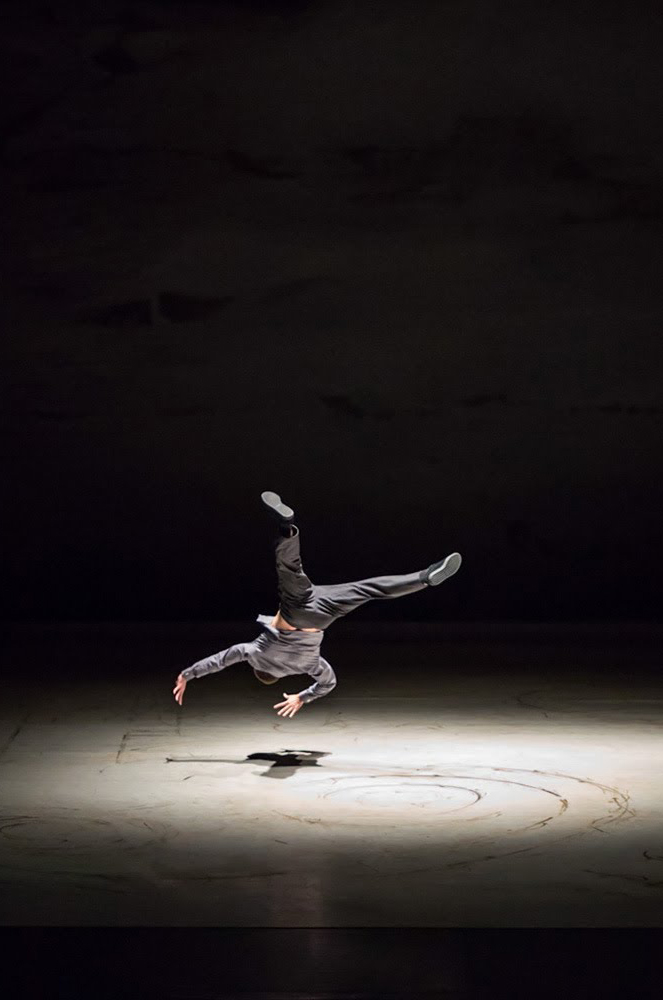
Kader Attou
The roots
The Roots c’est 12 danseurs et chorégraphes au parcours chargés d’expériences qui incarnent cette création sur scène avec une force, une générosité, un poésie, une technicité et une sincérité sans borne. Comme aime dire Kader des danseurs d’excellence au service de cette création, The Roots “les racines” le lien direct avec ces quelques 30 années de hip hop que nous avons parcouru, de h.i.p h.o.p présenté par Sidney et nos cartons de training dans la rue, jusqu’aux scènes les plus prestigieuse d’europe et du monde. .

Anna Halprin
Parades & Changes
Parades & Changes, replays is a full scale re-creation of the masterpiece Parades & Changes, a major 1965 work of American postmodern dance legend Anna Halprin. The provocative Parades & Changes, Halprin’s first “collective creation” dynamited the codes dominating dance by exposing the process of performance: improvising around several “scores,” dancers dress and undress, inventing gestures and vanishing naked in rolls of skin colored paper. This “ceremony of trust,” as it was named by Halprin, seeks to utilize dance as a medium for being together: her prolific composition addresses the process, the place, the action, and the performer as both unique and corresponding entities.

mourad merzouki
Vertikal
“Pour cette nouvelle création, je désire aborder un nouvel espace, celui de la verticalité. À travers un dispositif proposé par la compagnie Retouramont et Benjamin Lebreton, et accompagné d’une dizaine de danseurs au plateau je me confronterai à un environnement où le mouvement se joue de la gravité.”more…
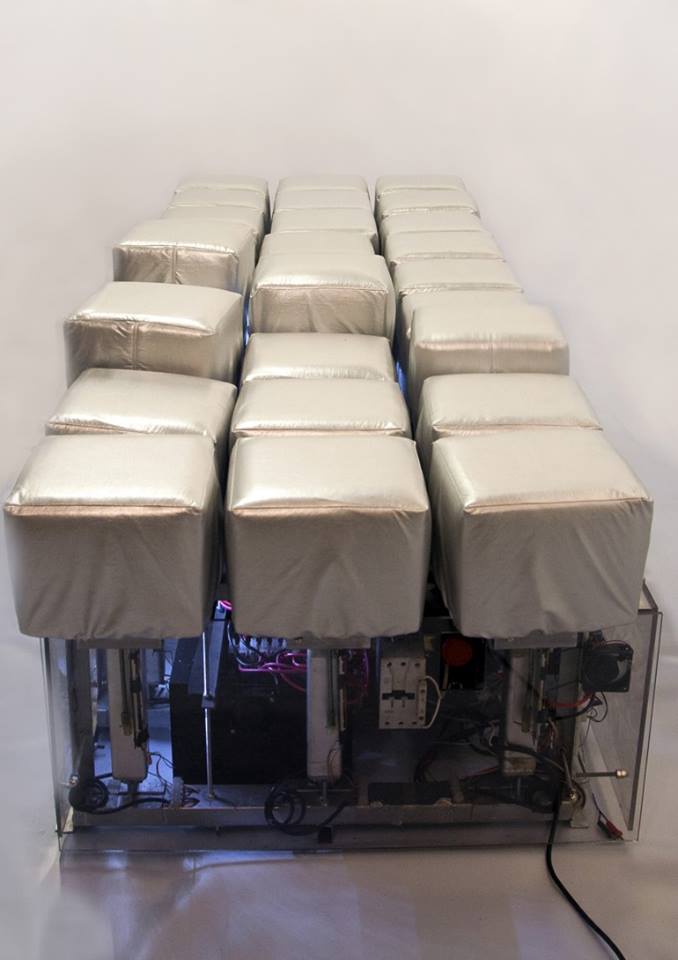
Ricardo Barreto and Maria Hsu Rocha
Martela
FILE FESTIVAL
Tactila is an art form whose medium is the sense of touch (tact) which is independent from the all the other ones and has its own intelligence, imagination, memory, perception, and sensation. It is well known that vision and sound have hegemony in arts and in other disciplines. Tactila takes place in time and, therefore, can be recorded and have various forms of notation for subsequent executions. That is why its development became possible only now, thanks to mechatronic and robotic systems which are compatible with machine languages.
The creation of tactile works involves a (tact) composition, which can be made through handmade notation and played on a keyboard or directly on the computer of the tactile machine ( robot ).
Tactile machines can present numerous tactile possibilities through points, vectors, and textures with varying rhythms and intensities, and be run in different extensions and locations of our body.
.
The first tactile machine is called “Martela”. It is a tactile robot comprised of 27 engines subdivided into three squares (3 x 3), i.e., each square has 9 engines. Each engine corresponds to a matrix point, so we have 27 tactile units that allow to touch the user’s body with various intensities.

Robert Morris
Glass Labyrinth
“Setting up a maze with invisible walls may not seem like a challenge, but Morris’s creation harkens to ancient archetypes, while acting as a commentary on modernism and its reliance upon glass. Additionally, glass’s inherent reflections, refractions and other qualities promise to be as confusing to visitors as solid walls.” John Hill
video

Zimoun
150 prepared dc-motors, 270kg wood, 210m string wire
The sounds of 150 mechanical seesaws striking the floor of a former church in Austria reverberate around its nave in this installation by Swiss artist Zimoun (+ movie).Named after the materials used in its creation, Zimoun’s latest installation is titled: 150 prepared dc-motors, 270kg wood, 210m string wire.The artist used the wood to build 150 simple seesaws, made from long batons that pivot vertically on short upright lengths.Orientated in different directions, these are scattered around the nave and transepts of Klangraum Krems – a Gothic church converted into an events space in the Austrian town of Krems an der Donau.Each seesaw incorporates a motor that powers a thin metal arm, which is attached to one end of the rocking wooden element by piece of wire.When the motor is activated the arm flicks back, pulling the string taught and causing the end of the wood to strike the ground.“Over a simple mechanical system the wooden laths are set in motion and randomly falling back to the floor,” said Zimoun.

TOM BEDDARD
Том Беддард
Pyramid
After his PhD, the world of the “dot-com” internet boom was more appealing than academia, so Tom became a web developer specializing in e-commerce content management systems. For the past ten years Tom has worked at a variety of agencies in Scotland and now currently works at Glasgow based 55 Degrees, which specializes in interactive museum exhibits and video production. Tom considers himself to be a ‘creative coder,’ a techie who also has an appreciation for the aesthetics. His site, subblue.com, is where he writes programs and plugins exploring mathematical and generative graphics. Where possible, these experiments are interactive and have the source-code available for download. The exposure of his site and the Photoshop and After Effects plugins he has released have resulted in the creation of book covers, music videos, and stage visuals.

BEN JACK
Elucidating Feedback
File Festival
The more we look, the more we see, the more we see the more we look. “Elucidating feedback” is a brain-controlled installation about the creativity inherent in the act of observation. The more attention that is paid to the installation, the more order is reflected in the video and audio. The idea is that we create the finer details of our experience through the act of being attentive. The more we observe our environment, the more we discover, and the result of this active process is the creation of the rich details of our experience. The project uses neuro feedback supplied through interaction between the user and a BCI (brain-computer interface) device. The mindset (the BCI device) reads your brainwaves and this alters how the installation creates form from static. The more attention is paid, the more pattern is formed; as less attention is paid, the pattern breaks back into static. This is intended to form a feedback loop between the user’s attention and the subject of their attention (the projected patterns). The audio-visual aspect of the installation produces pattern, order and detail in direct proportion to the attention that the user is currently paying. If the user is in a state where the mind is freely wandering and not focused on any one thing, the patterns decay into static, bringing the installation back to a state of stasis.